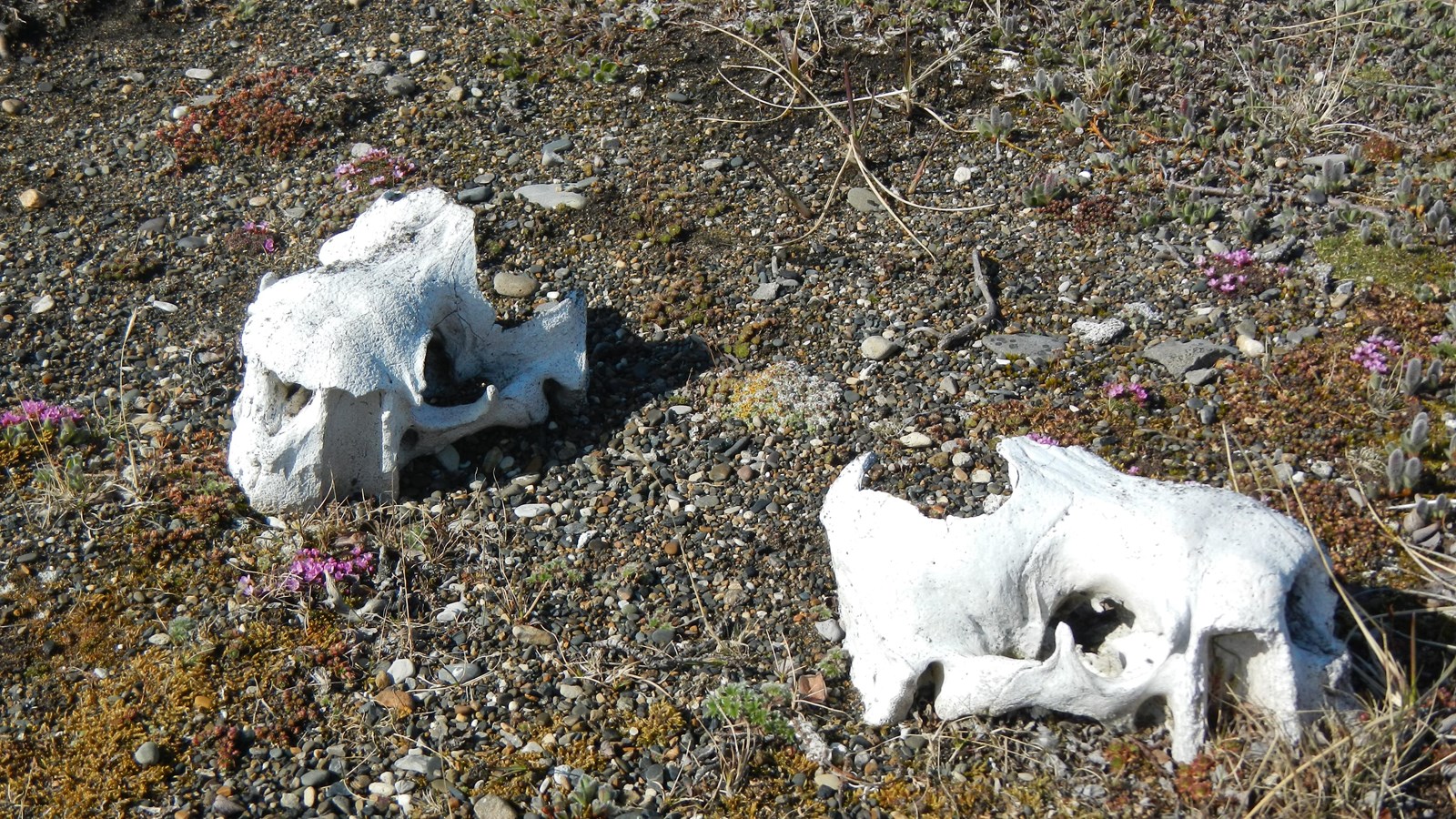Last updated: May 11, 2020
Place
Ipiutak National Historic Landmark

NPS Photo/R. Hood
The Ipiutak Site is one of the largest precontact village archeological sites in Arctic Alaska. It’s over 500 ancient house ruins line the beach ridges on the Tikigaq spit, which points west like an extended finger over the Chukchi Sea. The Tikigaq spit is the flank of a giant mythical whale and also represents a raven’s bill or a harpoon point.
Archeologists found that the house ruins were girded by massive whale and walrus bones, many of which remain at the site today. The long and slender jaw bones (mandibles) of whales are still used to demarcate important spaces at the adjacent Village of Point Hope today. The Ipiutak Site preserves the ancient items of daily life used over 1800 years ago. The Ipiutak are well known for elaborate decorative carving in ivory, wood, bone, and stone artifacts.
The Ipiutak archeological culture found here, predates AD 600. The communities of this particular period seemed to flourish and reach a population peak between AD 650 and AD 870, then abated in the following years. However, the Ipiutak Site National Historic Landmark is part of a larger archaeological district that includes the sites (Jabbertown) Qimiarzuk, the Tikigaq historic cemetery, and others on the spit. With Point Hope, these sites convey the long history of the Inupiat and their ancestors in North America.
